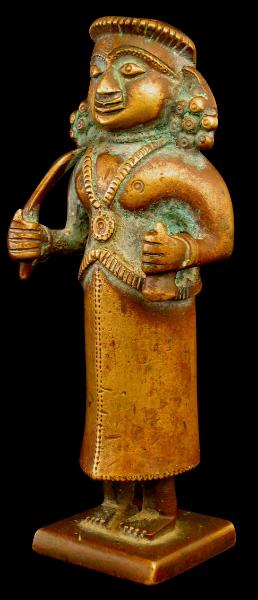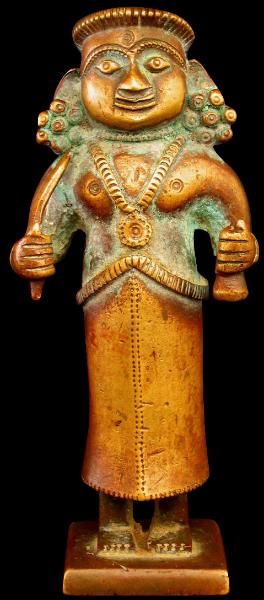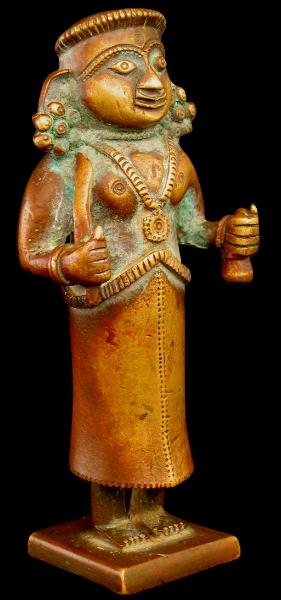
Bhuta Idol Bronze, South India, 19th century

 Bhuta Image of Varte
Bhuta Image of Varte
Karnataka, South India
19th century
height: 12.9cm
This exceptional and rare 19th century bronze is a bhuta idol. The image holds a sword in the right hand and a traditional bell in the left. The details are wonderful: a typical headdress, the mask-like face, the heavy and ornate earrings, a heavy necklace, double bracelets and the dhoti belted around the waist.
Belief in bhutas dates from pre-Vedic times. Generally Bhutas are malevolent spirits, particularly the spirits of evil men who have died from execution, accident or suicide. If people suspect that bhutas are about, they protect themselves by lying on the ground, because the bhutas never rest on earth. Krishna, in the Bhagavad Gita, declares that humans who worship bhutas become bhutas themselves. This hasn’t stopped the practice in Karnataka and northern Kerala where bhuta worship is commonplace in rural areas.
Offerings are made regularly to bhutas to insure protection against bad harvests, and human and animal diseases, including fatal childhood illnesses. They are thought to roam about villages and country-sides (a bit like ghosts or goblins) and to harass those who neglect to propitiate them.
Most villages have small shrines with wooden Bhuta idols inside or numbers of idols heaped together under a tree or makeshift shelter.
Bhuta rituals are impressive ceremonies and elaborate dance performances take place at auspicious times in Karnataka and in Kerala.
The image has a smooth, golden patina.
See Beltz (2009, p. 84) for a similar example that is now in the Museum Rietberg, Zurich.
References
Beltz, J., et al, Wenn Masken Tanzen: Rituelles Theater und Bronzekunst aus Sudwestindien, Museum Rietberg, 2009.
Rond, F., Bhuta: Masques & Objets Rituels des Espirits/Masks & Ritual Objects of the Spirits, Karnataka, Inde di Sud, Galerie le Toit du Monde/Indian Heritage, 2011.
Inventory no.: 166
SOLD


